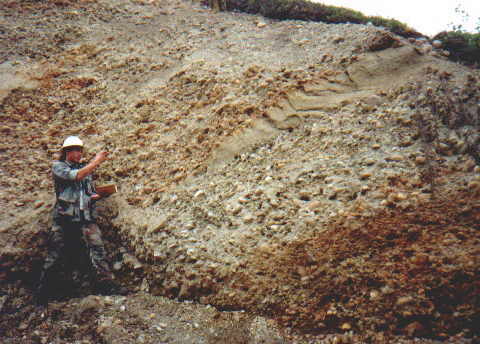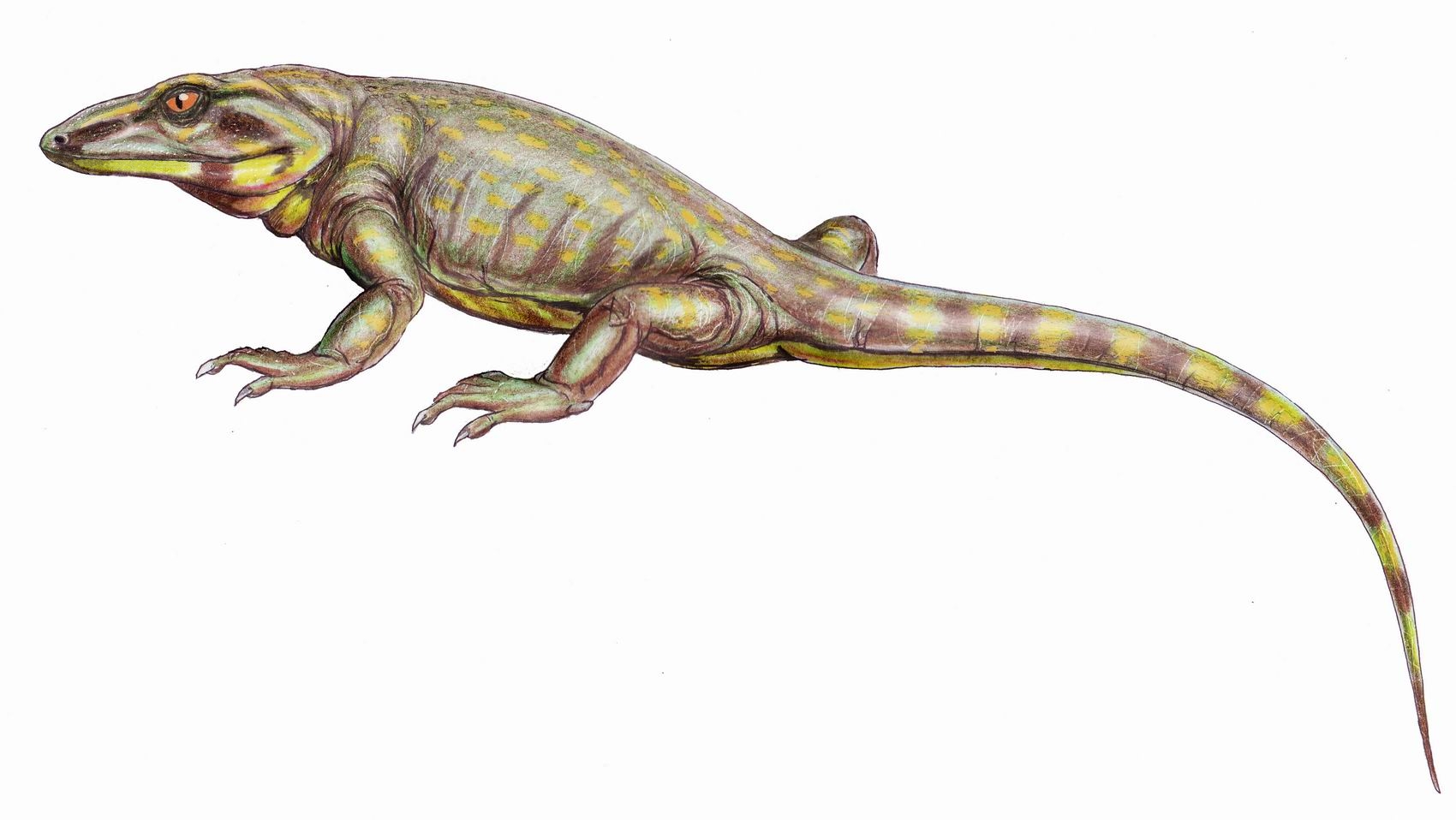|
Monopeltis Rhodesiana
''Monopeltis rhodesiana'' is a species of amphisbaenian in the family Amphisbaenidae. The species is native to southern Africa. Geographic range ''M. rhodesiana'' is found in southern Malawi, central Mozambique, southern Zambia, and northwestern Zimbabwe. Habitat The preferred natural habitat of ''M. rhodesiana'' is mesic savanna, with alluvial soil. Description ''M. rhodesiana'' is pinkish, both dorsally Standard anatomical terms of location are used to unambiguously describe the anatomy of animals, including humans. The terms, typically derived from Latin or Greek roots, describe something in its standard anatomical position. This position prov ... and ventrally. Adults usually have a snout-to-vent length (SVL) of . The maximimum recorded SVL is . The tail is short, with only 5–9 caudal annuli. Branch, Bill (2004). ''Field Guide to Snakes and other Reptiles of Southern Africa''. Third Revised edition, Second impression. Sanibel Island, Florida: Ralph Curtis Books. 399 p ... [...More Info...] [...Related Items...] OR: [Wikipedia] [Google] [Baidu] |
Donald George Broadley
Donald George Broadley (1932–2016) was an African herpetologist. He described as new to science 115 species and subspecies, and 8 genera and subgenera of reptiles. He was one of the founders of the Herpetological Association of Africa (initially the Herpetological Association of Rhodesia). He earned his doctorate at the University of Natal in 1966.Beolens, Bo; Watkins, Michael; Grayson, Michael (2011). ''The Eponym Dictionary of Reptiles''. Baltimore: Johns Hopkins University Press. xiii + 296 pp. . ("Broadley", p. 39). His widow, Sheila Broadley, is also a herpetologist. Legacy Broadley is commemorated in the scientific names of eight species of reptiles: ''Afroedura broadleyi'', '' Atheris broadleyi'', ''Elapsoidea broadleyi'', ''Lygodactylus broadleyi'', ''Pelusios broadleyi'', ''Platysaurus broadleyi'', ''Scolecoseps broadleyi'', and ''Tricheilostoma broadleyi ''Tricheilostoma broadleyi'' is a species of snake in the family Leptotyphlopidae. The species is endemic to Ivor ... [...More Info...] [...Related Items...] OR: [Wikipedia] [Google] [Baidu] |
Alluvium
Alluvium (from Latin ''alluvius'', from ''alluere'' 'to wash against') is loose clay, silt, sand, or gravel that has been deposited by running water in a stream bed, on a floodplain, in an alluvial fan or beach, or in similar settings. Alluvium is also sometimes called alluvial deposit. Alluvium is typically geologically young and is not consolidated into solid rock. Sediments deposited underwater, in seas, estuaries, lakes, or ponds, are not described as alluvium. Floodplain alluvium can be highly fertile, and supported some of the earliest human civilizations. Definitions The present consensus is that "alluvium" refers to loose sediments of all types deposited by running water in floodplains or in alluvial fans or related landforms. However, the meaning of the term has varied considerably since it was first defined in the French dictionary of Antoine Furetière, posthumously published in 1690. Drawing upon concepts from Roman law, Furetière defined ''alluvion'' (the F ... [...More Info...] [...Related Items...] OR: [Wikipedia] [Google] [Baidu] |
Taxa Named By Donald George Broadley
In biology, a taxon (back-formation from ''taxonomy''; plural taxa) is a group of one or more populations of an organism or organisms seen by taxonomists to form a unit. Although neither is required, a taxon is usually known by a particular name and given a particular ranking, especially if and when it is accepted or becomes established. It is very common, however, for taxonomists to remain at odds over what belongs to a taxon and the criteria used for inclusion. If a taxon is given a formal scientific name, its use is then governed by one of the nomenclature codes specifying which scientific name is correct for a particular grouping. Initial attempts at classifying and ordering organisms (plants and animals) were set forth in Carl Linnaeus's system in ''Systema Naturae'', 10th edition (1758), as well as an unpublished work by Bernard and Antoine Laurent de Jussieu. The idea of a unit-based system of biological classification was first made widely available in 1805 in the int ... [...More Info...] [...Related Items...] OR: [Wikipedia] [Google] [Baidu] |
Reptiles Described In 1976
Reptiles, as most commonly defined are the animals in the class Reptilia ( ), a paraphyletic grouping comprising all sauropsids except birds. Living reptiles comprise turtles, crocodilians, squamates (lizards and snakes) and rhynchocephalians (tuatara). As of March 2022, the Reptile Database includes about 11,700 species. In the traditional Linnaean classification system, birds are considered a separate class to reptiles. However, crocodilians are more closely related to birds than they are to other living reptiles, and so modern cladistic classification systems include birds within Reptilia, redefining the term as a clade. Other cladistic definitions abandon the term reptile altogether in favor of the clade Sauropsida, which refers to all amniotes more closely related to modern reptiles than to mammals. The study of the traditional reptile orders, historically combined with that of modern amphibians, is called herpetology. The earliest known proto-reptiles originated around ... [...More Info...] [...Related Items...] OR: [Wikipedia] [Google] [Baidu] |
Reptiles Of Malawi
Reptiles, as most commonly defined are the animals in the class Reptilia ( ), a paraphyletic grouping comprising all sauropsids except birds. Living reptiles comprise turtles, crocodilians, squamates (lizards and snakes) and rhynchocephalians ( tuatara). As of March 2022, the Reptile Database includes about 11,700 species. In the traditional Linnaean classification system, birds are considered a separate class to reptiles. However, crocodilians are more closely related to birds than they are to other living reptiles, and so modern cladistic classification systems include birds within Reptilia, redefining the term as a clade. Other cladistic definitions abandon the term reptile altogether in favor of the clade Sauropsida, which refers to all amniotes more closely related to modern reptiles than to mammals. The study of the traditional reptile orders, historically combined with that of modern amphibians, is called herpetology. The earliest known proto-reptiles originated ... [...More Info...] [...Related Items...] OR: [Wikipedia] [Google] [Baidu] |
Reptiles Of Mozambique
Reptiles, as most commonly defined are the animals in the class Reptilia ( ), a paraphyletic grouping comprising all sauropsids except birds. Living reptiles comprise turtles, crocodilians, squamates (lizards and snakes) and rhynchocephalians (tuatara). As of March 2022, the Reptile Database includes about 11,700 species. In the traditional Linnaean classification system, birds are considered a separate class to reptiles. However, crocodilians are more closely related to birds than they are to other living reptiles, and so modern cladistic classification systems include birds within Reptilia, redefining the term as a clade. Other cladistic definitions abandon the term reptile altogether in favor of the clade Sauropsida, which refers to all amniotes more closely related to modern reptiles than to mammals. The study of the traditional reptile orders, historically combined with that of modern amphibians, is called herpetology. The earliest known proto-reptiles originated around ... [...More Info...] [...Related Items...] OR: [Wikipedia] [Google] [Baidu] |
Reptiles Of Zambia
Reptiles, as most commonly defined are the animals in the class Reptilia ( ), a paraphyletic grouping comprising all sauropsids except birds. Living reptiles comprise turtles, crocodilians, squamates ( lizards and snakes) and rhynchocephalians (tuatara). As of March 2022, the Reptile Database includes about 11,700 species. In the traditional Linnaean classification system, birds are considered a separate class to reptiles. However, crocodilians are more closely related to birds than they are to other living reptiles, and so modern cladistic classification systems include birds within Reptilia, redefining the term as a clade. Other cladistic definitions abandon the term reptile altogether in favor of the clade Sauropsida, which refers to all amniotes more closely related to modern reptiles than to mammals. The study of the traditional reptile orders, historically combined with that of modern amphibians, is called herpetology. The earliest known proto-reptiles originated ... [...More Info...] [...Related Items...] OR: [Wikipedia] [Google] [Baidu] |
Reptiles Of Zimbabwe
Reptiles, as most commonly defined are the animals in the class Reptilia ( ), a paraphyletic grouping comprising all sauropsids except birds. Living reptiles comprise turtles, crocodilians, squamates (lizards and snakes) and rhynchocephalians (tuatara). As of March 2022, the Reptile Database includes about 11,700 species. In the traditional Linnaean classification system, birds are considered a separate class to reptiles. However, crocodilians are more closely related to birds than they are to other living reptiles, and so modern cladistic classification systems include birds within Reptilia, redefining the term as a clade. Other cladistic definitions abandon the term reptile altogether in favor of the clade Sauropsida, which refers to all amniotes more closely related to modern reptiles than to mammals. The study of the traditional reptile orders, historically combined with that of modern amphibians, is called herpetology. The earliest known proto-reptiles originated aroun ... [...More Info...] [...Related Items...] OR: [Wikipedia] [Google] [Baidu] |
Monopeltis
''Monopeltis'' is a genus of amphisbaenians in the family Amphisbaenidae. Species in the genus are commonly known as worm lizards, even though they are not lizards. The genus is endemic to southern Africa. 19 species are placed in this genus. Species The following species are recognized as being valid. *''Monopeltis adercae'' – Lualaba worm lizard *''Monopeltis anchietae'' – Angolan spade-snouted worm lizard, Anchieta's worm lizard *''Monopeltis capensis'' – Cape worm lizard, South African shield-snouted amphisbaenian, Cape wedge-snouted worm lizard *''Monopeltis decosteri'' – De Coster's worm lizard *''Monopeltis galeata'' – helmeted worm lizard *''Monopeltis guentheri'' – Western Congo worm lizard *''Monopeltis infuscata'' – dusky spade-snouted worm lizard, infuscate wedge-snouted amphisbaenian *''Monopeltis jugularis'' – Gaboon worm lizard *'' Monopeltis kabindae'' – Kabinda worm lizard *''Monopeltis leonhardi'' – Kalahari worm lizard *''Monope ... [...More Info...] [...Related Items...] OR: [Wikipedia] [Google] [Baidu] |
Modes Of Reproduction
Animals make use of a variety of modes of reproduction to produce their young. Traditionally this variety was classified into three modes, oviparity (embryos in eggs), viviparity (young born live), and ovoviviparity (intermediate between the first two). However, each of those so-called traditional modes covered a wide range of diverse reproductive strategies. The biologist Thierry Lodé has accordingly proposed five modes of reproduction based on the relationship between the zygote (the fertilised egg) and the parents. His revised modes are ovuliparity, with external fertilisation; oviparity, with internal fertilisation of large eggs containing a substantial nutritive yolk; ovo-viviparity, that is oviparity where the zygotes are retained for a time in a parent's body, but without any sort of feeding by the parent; histotrophic viviparity, where the zygotes develop in the female's oviducts, but are fed on other tissues; and hemotrophic viviparity, where the developing embryos are fe ... [...More Info...] [...Related Items...] OR: [Wikipedia] [Google] [Baidu] |
William Roy Branch
William Roy "Bill" Branch (12 May 1946, London, England – 14 October 2018, Port Elizabeth, South Africa) was a British-South-African herpetologist. Branch studied at the University of Southampton where he remained until completing his Ph.D. degree (''Studies on a foetal-specific alpha-globulin FPin the rabbit'' ). From 1972 he worked as a scientist in the Life Sciences Division of the Atomic Energy Board in Pretoria doing research on, inter alia, liver cancer, but returned to the University of Southampton in 1976 to take up a post-doctoral research fellowship in the Department of Biology studying the synthesis of chemicals in the liver of foetal rabbits. He started working at Port Elizabeth Museum in 1979 and retired in 2011, when he was appointed as Research Associate and Curator Emeritus. Over a period of almost 40 years he conducted field work in about 20 African countries and played a major role in building up the large reptile and amphibian collections at the Museum. Pub ... [...More Info...] [...Related Items...] OR: [Wikipedia] [Google] [Baidu] |







.jpg)